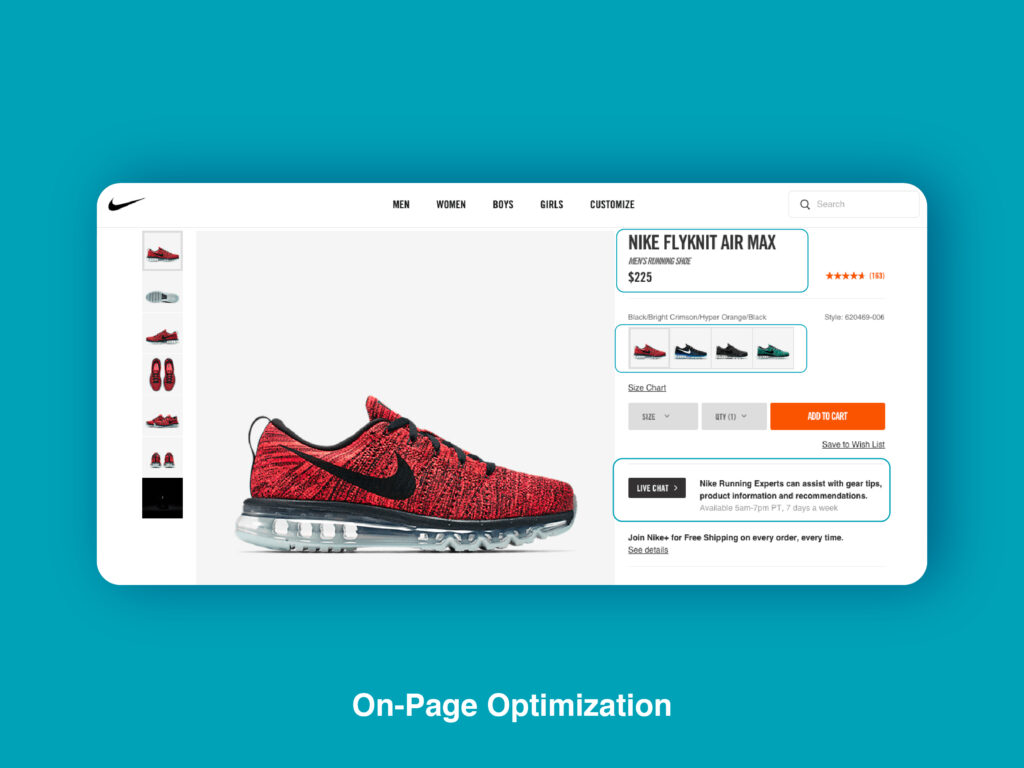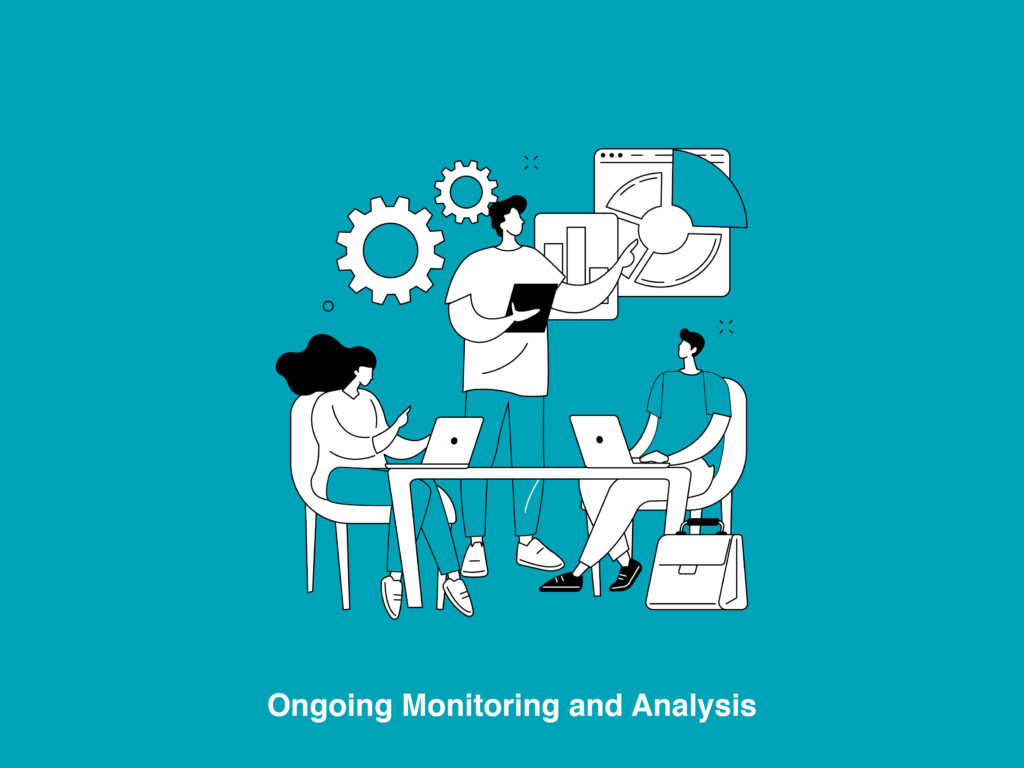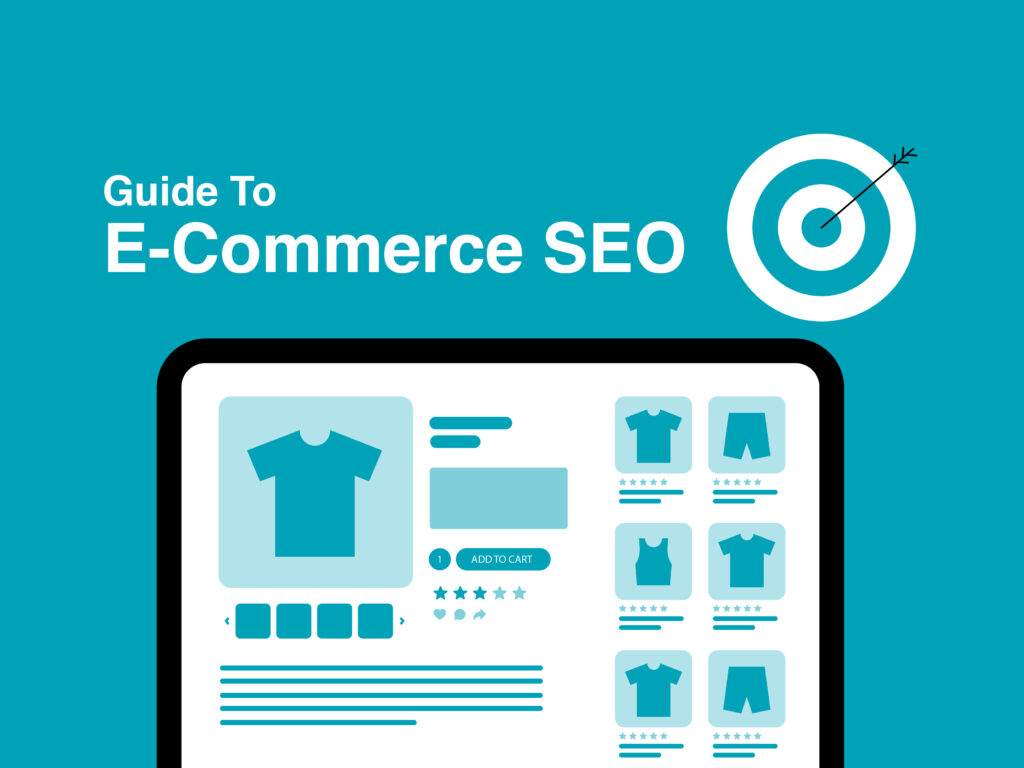In the ever-evolving world of online commerce, standing out from the crowd is crucial for success. With the USA e-commerce landscape expected to reach a staggering $1.4 trillion by 2025, mastering the art of E-Commerce SEO has become more important than ever. This comprehensive guide will equip you with the knowledge and tools needed to optimize your online store and gain a competitive edge in the ever-growing digital marketplace.
Understanding E-Commerce SEO
E-Commerce SEO, or Search Engine Optimization, refers to the process of optimizing your online store to improve its visibility in search engine results pages (SERPs) for relevant keywords. This translates to attracting organic traffic, potentially leading to increased brand awareness, website visits, and ultimately, conversions.
Why is E-Commerce SEO essential for your business in 2024?
- Increased Organic Traffic: By implementing effective E-Commerce SEO strategies, you can attract potential customers who are actively searching for products or services like yours. This targeted traffic is more likely to convert compared to generic website visitors.
- Improved Brand Visibility: Ranking higher in search engine results enhances your brand’s online presence and builds trust with potential customers. When users see your website consistently appearing at the top of relevant searches, it signifies authority and credibility.
- Cost-Effective Marketing Strategy: Unlike paid advertising, which requires ongoing investment, E-Commerce SEO offers a long-term, cost-effective way to reach potential customers. Once you optimize your website and content, the benefits can last for a considerable period.
- Enhanced User Experience: E-commerce SEO often overlaps with creating a user-friendly website. Optimizing your website structure, navigation, and loading speed not only improves search engine ranking but also provides a more seamless shopping experience for visitors.
- Competitive Edge: In the competitive landscape of the USA E-Commerce scene, ranking higher in search results can give you a significant advantage over your competitors. By implementing effective E-Commerce SEO strategies, you can capture a larger share of the market and attract more potential customers.
Building a Winning E-Commerce SEO Strategy:
Now that you understand the significance of E-Commerce SEO, let’s delve into the essential steps to build a winning strategy:
1. Keyword Research:
- Identifying relevant keywords: Conduct thorough keyword research to identify relevant search terms that users are actively searching for when seeking products or services like yours. Tools like Google Keyword Planner, Ahrefs, and SEMrush can be helpful in this process.
- Understanding search intent: Analyze the search intent behind each keyword. Are users looking for information, browsing options, or ready to make a purchase? This understanding will help you tailor your content accordingly.
- Prioritizing long-tail keywords: While high-volume keywords may seem attractive, they are often highly competitive. Consider incorporating long-tail keywords (more specific keyword phrases) that are less competitive and can still attract targeted traffic.
2. On-Page Optimization:

- Product Page Optimization: Each product page should be optimized for its target keywords. This includes:
- Title tags: Include relevant keywords in your product title tags, keeping them concise and descriptive (ideally under 60 characters).
- Meta descriptions: Craft compelling meta descriptions (around 160 characters) that entice users to click on your product page.
- Product descriptions: Utilize relevant keywords naturally throughout your product descriptions while providing informative and engaging content.
- High-quality images and videos: Include high-resolution product images and informative videos to showcase your products and enhance user experience.
- Technical aspects: Ensure your product pages load quickly, have a mobile-friendly design, and are properly structured using relevant HTML elements and internal linking.
- Category Page Optimization: Optimize category pages using relevant keywords and informative descriptions to guide users to the products they seek.
- Blog Content & Information Pages: Create informative and engaging blog content and information pages that address user queries, demonstrate expertise, and build brand trust. Optimize these pages with relevant keywords while ensuring high-quality and valuable content.
3. Technical SEO:
- Website Speed: Ensure your website loads quickly and efficiently. This can be achieved through optimizing images, reducing code bloat, and utilizing caching plugins.
- Mobile-friendliness: In today’s mobile-first world, having a mobile-friendly website is crucial. Google prioritizes mobile-friendly websites in search results, and a poor mobile experience can significantly impact your ranking and user engagement.
- Structured data markup: Implement structured data markup to provide search engines with more context about your website and products, potentially leading to richer search results and improved click-through rates.
- Website security: Maintaining a secure website with a valid SSL certificate is crucial for establishing trust with users and search engines alike.
4. Off-Page Optimization:
- Link Building: Earn high-quality backlinks from reputable websites relevant to your industry. This can be achieved through guest blogging, creating valuable content that others want to link to, and participating in online communities. However, avoid black-hat SEO tactics like buying links, which can harm your website in the long run.
- Brand Awareness Building: Actively engage in activities that build brand awareness and establish your brand as an authority in your niche. This could involve social media marketing, influencer outreach, participating in industry events, and collaborating with complementary businesses.
- Customer Reviews and Ratings: Encourage customers to leave reviews and ratings on your website and other online platforms. Positive reviews and high ratings can significantly improve trust and conversion rates.
5. Ongoing Monitoring and Analysis:

- E-commerce SEO is an ongoing process, not a one-time fix. Regularly monitor your website’s performance, analyze search engine ranking data, and track key metrics like website traffic, conversion rates, and user engagement. This will allow you to identify areas for improvement and refine your E-Commerce SEO strategy over time.
Additional Tips:
- Stay updated: Search engine algorithms are constantly evolving, so staying updated on the latest SEO trends and best practices is crucial. Utilize resources like Google Search Central and industry publications to keep yourself informed.
- Focus on user experience: Remember, ultimately, the goal of E-Commerce SEO is to provide a positive user experience. Optimize your website for both search engines and humans, ensuring a seamless and enjoyable shopping experience for your customers.
- Seek professional help: If you feel overwhelmed or lack the expertise, consider seeking professional assistance from an experienced E-Commerce SEO agency.
By partnering with Scoop Global today, you can successfully navigate the ever-changing world of E-Commerce SEO and establish your online store as a prominent player in the thriving USA E-commerce landscape. Connect with us today.


